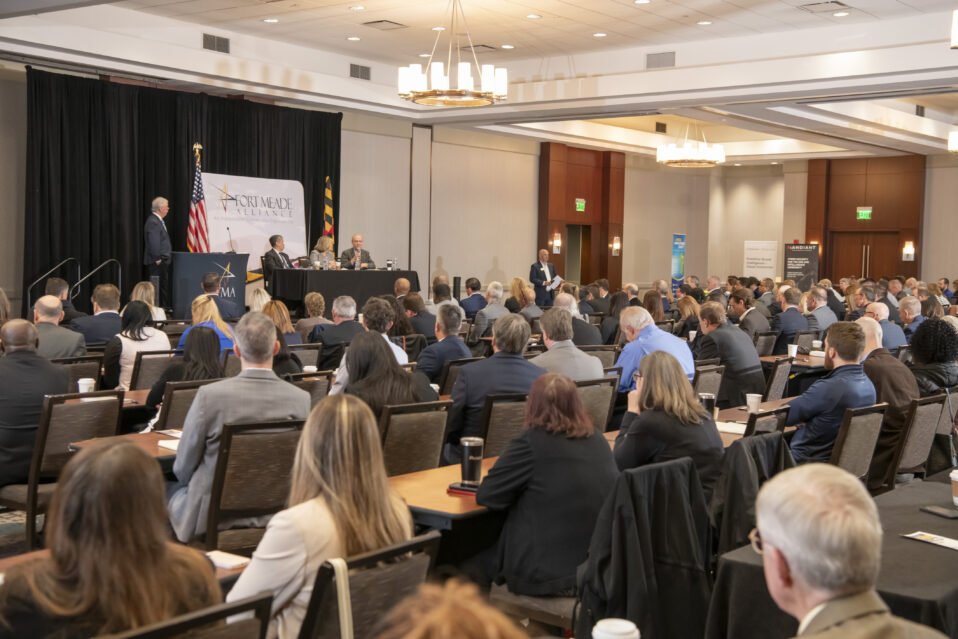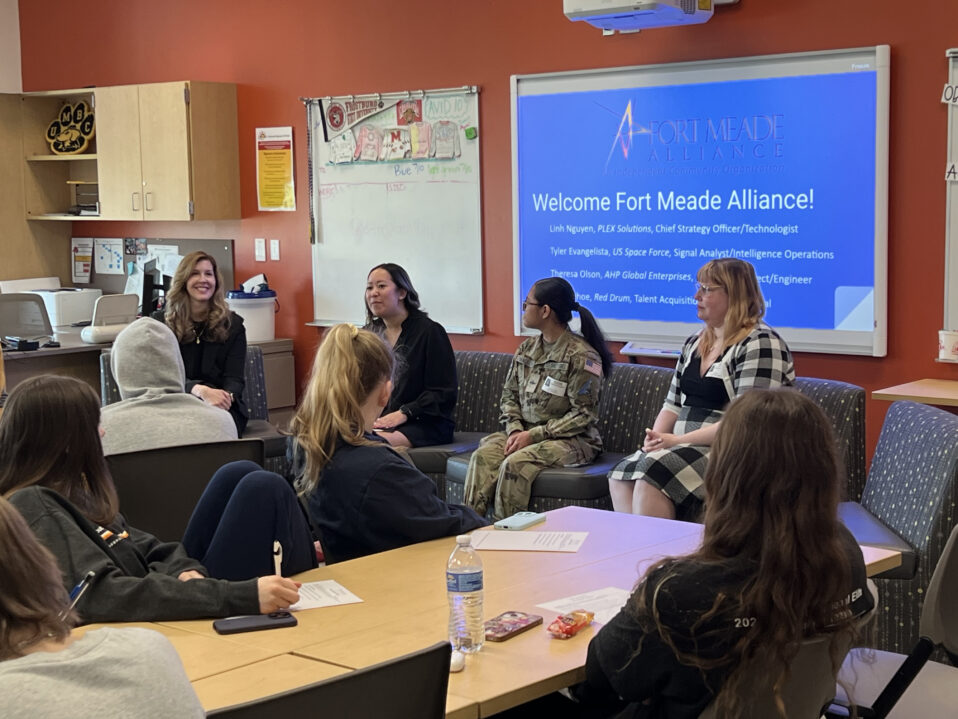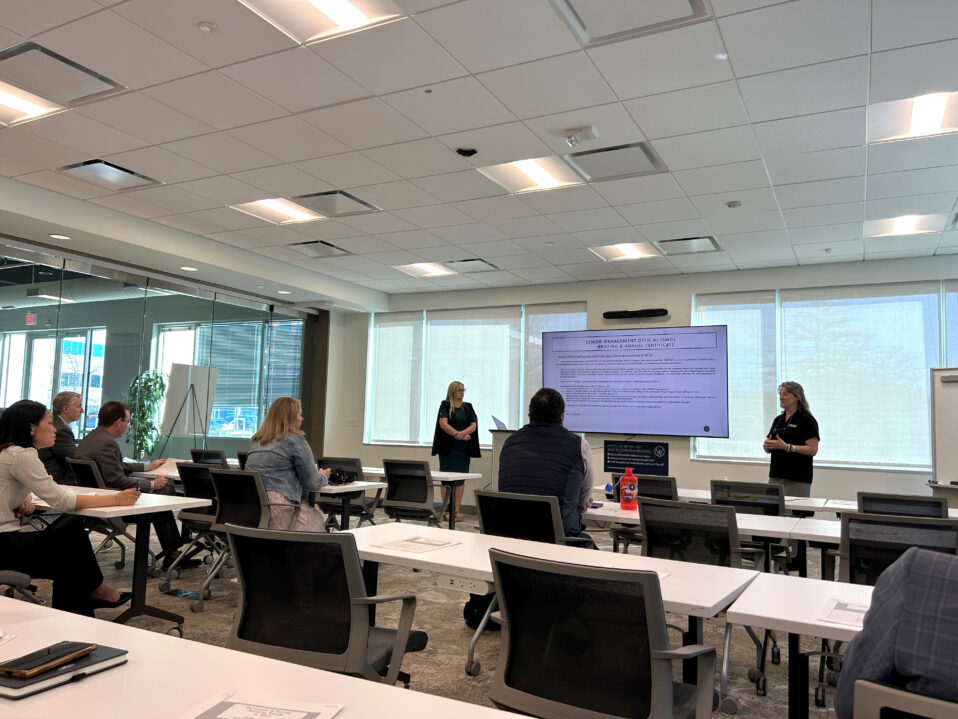
Five key challenges to expanding the cybersecurity/information technology workforces were identified after nearly a year of research.
On any given day, more than 22,000 cybersecurity jobs stand unfilled in the Fort Meade Region, leaving Maryland and the nation vulnerable to cyberattacks.
For nearly a year, a Fort Meade Alliance steering committee dissected the realities of the cybersecurity/information technology (CS/IT) workforce and identified five key challenges to expanding it. Then in February, members of the Fort Meade Alliance came together virtually to dig into the challenges of “Solving the Cyber Workforce Shortage.” The webinar focused on the single biggest challenge to expanding the CS/IT workforce: building diversity.
Keynote speaker Dr. Freeman Hrabowski III, President of the University of Maryland Baltimore County, said the key to building diversity is harnessing “what Jim Collins calls the genius of ‘and’ versus the tyranny of ‘or’.”
Hrabowski and Dr. Maureen McMahon, Deputy Superintendent for Academics and Strategic Initiatives for Anne Arundel County Public Schools, highlighted multiple ways in which the education system, the CS/IT profession and American society have unduly limited STEM career opportunities to a narrow band of individuals.
“People get upset because I say unfortunately in college, we weed out many students… The more prestigious the university, the greater the chance the student will leave STEM,” Hrabowski said. “Many people who went to college heard somebody say, look at the student to your left, look at the student to your right, one of you will not graduate. That’s a terrible thing to say because it’s a self-fulfilling prophesy. If I am at all an immature kid, I’m going to think oh god, he’s talking about me so I may as well have a good time because I’m not going to be here. We should say, look at the student to your left, look at the student to your right, our goal is to make sure all three of you graduate.”
Educators and students need to “acknowledge that STEM is hard work,” McMahon said. “It’s okay for it to be hard” and the ability to get through the hard work and recover from occasional failures can turn a student into an outstanding STEM professional.
Universities should say “we want people with grit,” Hrabowski said. Students should learn to value “hard work, resilience, never never never giving up, the right attitude, listening to advice and always saying [when they] need help” because that’s the way to succeed in any challenging endeavor.
The cyber industry has vital roles to play in helping a broader range of students successfully pursue CS/IT careers. Students need hands-on technology experiences, apprenticeships, internships and other work-learn experiences, and
those experiences need to be offered to younger students. High school students who work internships at the National Security Administration, “mature faster” and develop a deeper understanding of defense, intelligence and the “noble work of protecting our country,” Hrabowski said.
Students, including elementary school students, also need industry professionals to teach and mentor them.
The Fort Meade Region is “rich with talent” but that talent comes in two forms, Hrabowksi said. The first are the kids from educated families where a family member works in CS/IT so the child is exposed to educational resources, career information and role models. The second are talented kids who have none of those privileges but have just as much potential to become CS/IT professionals if given education, career information and mentors.
Building diversity within the region’s cyber workforce also requires opening doors for adults. The Fort Meade Region includes a large population of individuals who are transitioning out of the military or only completed part of a degree program or want to switch careers. Narrowly defined pathways to developing a CS/IT career have dissuaded or outright prevented many of those talented, interested adults from entering the profession. Several speakers at the “Solving the Cyber Workforce Shortage” webinar stressed the importance of identifying and supporting myriad pathways to a CS/IT career.
Furthermore, building diversity involves more than increasing the number of women, African Americans, Latinx and members of disadvantaged socio-economic groups in the cyber workforce. Educators, industry leaders, parents and job seekers need to break out of the stereotypical thinking that only individuals who are solely focused on mathematics and technology can be cyber professionals.
“I love poetry, I love literature but I get goosebumps doing math,” said Hrabowski, who argues that reading skills, critical thinking skills and education in social sciences are also vital for cyber professionals.
There is a persistent stereotype that cyber professionals are narrowly focused on math and technology “and that you cannot be a well-rounded person in cyber,” said Shana Cosgrove, CEO of Nyla Technology Solutions. “That is preventing people from thinking this field is for them.”
While building diversity is vital to creating a larger cyber workforce, it is also essential to succeeding at cyber missions.
“One of the [cyber workforce] committee members said if you are not thinking about diversity, you are crippling yourself,” said Kirkland Murray, President and CEO of the Anne Arundel Workforce Development Corporation. “A more diverse workforce brings innovation and a different perspective on how to solve a problem for a client.”
That ability is especially critical when it comes to defending the country from cyberattacks.
“We have seen a lot of system failures due to not having enough viewpoints,” Cosgrove said. “If you have everyone who comes from the same background, educated in the same way, same socio-economic ideas, they tend not to think differently. Diversity of thought and diversity of perspective leads to better mission outcomes.”






